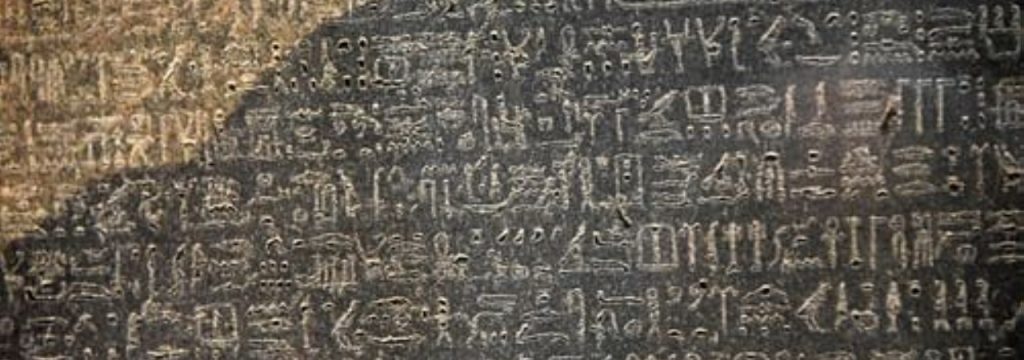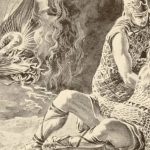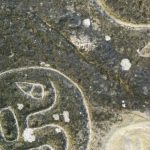
Things were not going well for Ptolemy V, king of Egypt in the second century BC. He was not one of the all-powerful Egyptian pharaohs who had ruled for many centuries. The young king was one of the Ptolemaic pharaohs who were of Greek heritage, descendants of a ruler put in place by Alexander the Great when he conquered Egypt in the fourth century BC. The reign of Ptolemy V was a time of civil unrest and foreign incursions, and the king was unpopular. It was time for a public relations campaign. The priests of the king wrote a short history of the king's family, described his accomplishments, and explained his future plans. This message was written on stone tablets in demotic Egyptian for the common people, in Egyptian hieroglyphs for the priests, and in Greek for the ruling class. Thus, it was written in two languages but in three scripts. These tablets were posted all over Egypt.
Almost two thousand years later, in 1799, the French army, led by Napoleon Bonaparte, was occupying Egypt. Several years earlier, Napoleon's army had defeated the British army near Cairo and had taken over the country. However, the British fleet had destroyed the French navy and there was no way for the French soldiers to return home. During this "extended vacation," French military engineers strengthened existing defensive positions. In the port town of Rosetta (now known as El-Rashid), the French were rebuilding an old fort when Captain Pierre-Franois Bouchard discovered an irregularly-shaped slab made of dark granite (often misidentified as basalt) with three types of writings on it in three distinct bands. Besides military forces, Napoleon had also brought scientists and scholars with him. The Rosetta Stone, as it became known, was turned over to them. They quickly realized that the three scripts contained the same message. They translated the Greek quickly but could not understand the other two scripts.
In 1801, the French were forced to surrender. Under the terms of the Treaty of Alexandria, the British claimed the artifacts that the French had found during their occupation. The French tried to smuggle the Rosetta Stone out of Egypt in a small boat but failed. The stone was brought to London and presented to the British Museum. On the back of the stone is the painted message, "Captured by the British Army in Egypt in 1801."
It was through the Rosetta Stone that scholars learned how to read Egyptian hieroglyphs. The hieroglyphic alphabet, one of the earliest writing systems ever developed, had been used by the Egyptians for 3,500 years. [A] However, it is far more complex than simple picture writing and contains thousands of symbols. [B] After Egypt was conquered by the Romans, Latin became the dominant language, and by the fourth century AD, no one could understand the symbols. [C] Before the Rosetta Stone was discovered, some scholars even believed that hieroglyphs were not really an alphabet at all but were merely decorations. [D]
Copies of the Rosetta Stone were sent by the British Museum to linguists all over Europe, but learning which Greek word represented which hieroglyph proved difficult. It was the brilliant French linguist Jean François Champollion who finally unlocked the mystery. He began studying the Rosetta Stone at the age of 18. After fourteen years, he deciphered the code. In a letter to the French Royal Academy of Inscriptions, he explained the three basic assumptions that led to a translation: (1) The Coptic Egyptian language, still spoken by a small group of Egyptians, was the final stage of the ancient Egyptian language. Champollion could consult with experts on Coptic Egyptian to learn about Ptolemaic Egyptian. (2) Hieroglyphs served not only as symbols of words and ideas (ideograms) but also as symbols of spoken sounds (phonograms). (3) Certain hieroglyphs enclosed in ovals were phonetic transcriptions of pharaohs' names. Once these hieroglyphs were understood, it was easier to decipher the rest. Armed with Champollion's translation, scholars all over the world took a new interest in Egypt and laid the foundation for our understanding of this ancient civilization.
The Rosetta Stone is still displayed at the British Museum and is one of the most popular exhibits there, but the Egyptian government wants it back. In 2003, Dr. Zahi Hawass, director of the Supreme Council of Antiquities in Cairo and a noted archaeologist himself, formally requested its return, saying, "The British ... should volunteer to return the stone because it is the icon of our Egyptian identity."
*demotic: describing a form of a language that is spoken by ordinary people
*hieroglyphs: symbols used in ancient Egypt to represent words or sounds





